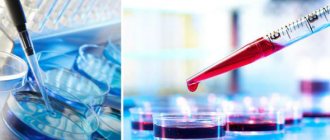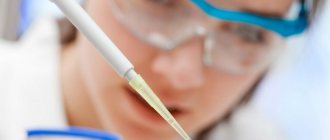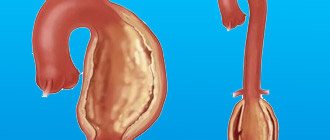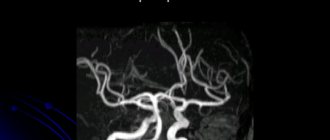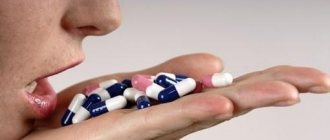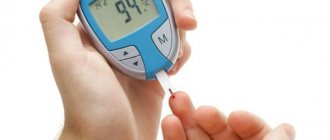There are a lot of drugs to lower blood sugar levels, from cheap tablets to modern insulins in special devices. Sometimes you want to understand the doctor's prescriptions. What if there is a better drug?
Get all the necessary tests at a discount of 10% to 25% using the promotional code “MOESHEALTH”. Visit one of the many conveniently located KDL medical offices https://bit.ly/3gIM9wP or call a nurse for free to collect biomaterial using the innovative laboratory service LifeTime https://bit.ly/3yd9Pj2
The importance of proper nutrition in diabetes
If you have diabetes of any type and stage of development, you need to monitor your diet every day. A properly selected diet not only prevents the disease from progressing, but also helps to cope with it. For example, in the early stages it is enough to adjust your diet and adhere to the established rules. Then you can be completely cured even without medications.
Diet therapy involves creating a balanced diet based on the optimal amount of essential nutrients (proteins, carbohydrates, fats) and total calories.
In this case, special indicators are also taken into account, for example, bread unit (XE). This is the name for a measure that reflects the total amount of carbohydrates in a particular food product. The mass of bread taken as 20-25 g per unit (in terms of pure carbohydrates is 10-12 g, i.e. half as much).
A person suffering from diabetes should consume a maximum of 25 bread units every day, i.e. no more than 250 g net carbohydrates. The permissible value is often less - it all depends on the type, stage of development of the disease, weight, age, general condition and the presence of physical activity.
Thus, to ensure proper nutrition it is necessary:
- Make a diet according to your doctor's recommendations.
- Develop a food menu for the week.
- Select products by quantity based on calorie content, nutritional value and bread units.
- Follow these rules strictly for a significant period of time.
- Include regular physical activity, which will also help reduce glucose levels.
Difficult choice
It is impossible to determine the best drug; they are all just building blocks in an integrated approach. Success in treating diabetes mellitus largely depends on the patient. In order to get the effect of taking drugs, not only the doctor must choose the right regimen and combine drugs, taking into account the risks from the kidneys, heart, and concomitant diseases. A person is required to change their lifestyle, eating habits, exercise, monitor glucose levels daily, keep a diary, and follow a diet. Only together can we achieve stable blood glucose levels.
Examples of a balanced breakfast, lunch and dinner
Menu planning is the main task for a diabetic. We must assume that the maximum calorie content is 1800-2000 kcal per day. Based on this, the composition and quantity of products for each meal are selected.
Breakfast
For tomorrow you can prepare dishes from the following products:
- rye bread (50 g) and butter (5-7 g);
- boiled chicken egg;
- milk glass (200 ml);
- porridge from any cereal (100 g).
Instead of porridge, you can include one of the following dishes:
cottage cheese with a moderate fat content of 4-5% (100 g);
- apple;
- plum;
- peach;
- apricot;
- any citrus (except lemon, lime).
The fruit should be of medium size - the weight in terms of pure pulp is about 100 g. Moreover, it is better to leave the fruit for an afternoon snack as a separate meal. Instead, you can use half a glass of milk (100 ml) for a snack.
Dinner
Lunch is the main meal, so it should be complete. For example, for a proper lunch you can consider the following dishes:
- fish soup or chicken soup (you can use broth with lean meat) 150 ml;
- boiled meat 100 g;
- boiled potatoes 100 g;
- black bread 50 g;
- raw or boiled vegetables 200 g;
- fruit (from those listed above) 100 g.
Dinner
A complete dinner can be prepared using the following products:
- boiled potatoes 100 g;
- any fish (low-fat) 100 g;
- fruits or vegetables 100 g;
- black bread 30 g.
Finally, as a late dinner (1-1.5 hours before bedtime), you can use a glass of low-fat kefir.
Foods prohibited for diabetes
If you have diabetes, you need to exclude or significantly limit a number of foods. These include:
- sugar, honey and sweets;
- sweet soda;
- smoked meats;
- fat meat;
- baking;
- margarine;
- fermented milk products (if they are fatty).
If you can’t give up sweets, you can use fruits and vegetables, as well as sugar substitutes, such as xylitol. Moreover, the quantities of these products should also be limited - it is better to consult a doctor first.
Leafy greens
Leafy greens are becoming more and more popular. In addition to various varieties of salads, chard, kale and spinach, and microgreens are increasingly taking up space on tables. These products contain, in addition to fiber, an impressive amount of antioxidants and magnesium, which lower blood sugar. It has been proven that insufficient magnesium intake increases the risk of developing insulin resistance and type 2 diabetes.
Can I drink coffee?
The question of drinking coffee for diabetes has not yet received a clear answer. There is an assumption that caffeine improves the sensitivity of body cells to the hormone insulin. Based on this, coffee can not only be drunk if you have diabetes, but it is also necessary. In addition, the drink improves your mood, makes you feel more alert, and stimulates brain activity.
On the other hand, there is also harm:
- increased blood pressure;
- load on the heart muscle;
- powerful diuretic effect (can be quite useful);
- weakening of bone tissue;
- increased acidity levels;
- insomnia.
Thus, diabetic patients can be advised to drink one cup of weak coffee every day. At the same time, you should not put not only sugar in it, but also cream. Cinnamon would be a useful addition as it also helps lower sugar levels.
Clinical pharmacologist to assist the endocrinologist: the choice of oral glucose-lowering therapy
Currently, there is a wide arsenal of inpatient and outpatient agents that can affect almost all known links in the pathogenesis of type 2 diabetes mellitus (DM). There are many classifications of them, including division by main effect, by points of application, by mechanism of action, by duration, etc.
There are hypoglycemic agents and antihyperglycemic agents. The purpose of hypoglycemic drugs (sulfonylurea derivatives and meglitinides) is to stimulate the synthesis of endogenous insulin, as a result of which, among the positive aspects of treatment, negative events also occur: weight gain and an increased risk of developing hypoglycemic conditions.
Antihyperglycemic drugs (α-glucosidase inhibitors, biguanides, thiazolidinediones, incretin mimetics) improve peripheral glucose utilization, but do not have a stimulating effect on pancreatic β-cells. Due to this, the level of insulin in the blood does not increase and blood glucose does not decrease below normal [1].
Antihyperglycemic agents affecting the small intestine prevent complete absorption of carbohydrates in the intestine by inhibiting α-glucosidase enzymes that affect the pancreas (secretogens) - causing its β-cells to secrete endogenous insulin, and affecting hepatocytes, adipose and other peripheral tissues (sensitizers) - increase the sensitivity of target organs to insulin.
Examples of secretogenic hypoglycemic drugs are sulfonylureas (glibenclamide, gliclazide, glimepiride) and prandial glucose regulators - meglitinides (nateglinide, repaglinide). Sensitizers are represented by biguanides (metformin) and thiazolidinediones (pioglitazone, rosiglitazone).
A relatively new class of glucose-lowering drugs are incretin mimetics (vildagliptin, saxagliptin, exenatide, liraglutide), the insulinotropic effect of which is glucose-dependent and is realized only at elevated glycemic levels. When normoglycemia is achieved, the insulin concentration returns to the basal level, which helps reduce the risk of developing hypoglycemia while taking these medications. The mechanism of action of these drugs is glucose-dependent and does not interfere with the normal glucagon response to hypoglycemia [2]. The main classes of oral hypoglycemic drugs and their mechanisms of action are presented in Table. 1 and in Fig. 1.
The reader is presented with dozens of names of medicines belonging to different pharmacological groups, each with its own mechanism of action, evidence base and cost. With such an abundance of medications, within a short period of communication with the patient, as well as in conditions of comorbidity and forced polypharmacy, choosing the right medication in an adequate dosage regimen is very difficult to do - almost impossible, which dictates the need to designate the clinical and pharmacological niches of these drugs, as well as their advantages and disadvantages (Fig. 2–8).
α-glucosidase inhibitors should be used primarily for the prevention of type 2 diabetes mellitus in patients with early manifestations of insulin resistance. In addition, they are the drugs of choice for people with prediabetes, which is accompanied by postprandial hyperglycemia at normal fasting levels (reduction in HbA1c levels by 0.5–0.8%).
Indications for prescribing glinides are type 2 diabetes mellitus when diet and exercise are ineffective. They are also designed to preferentially reduce postprandial hyperglycemia (0.5% to 1.5% reduction in HbA1c).
The clinical niche for the prescription of glitazones (thiazolidinediones) is reduced to type 2 diabetes mellitus, as monotherapy or in combination with a sulfonylurea drug, biguanides or insulin in the absence of effect from diet therapy, exercise and monotherapy with one of the above drugs (reduction of HbA1c level by 0 .5–1.4%).
Biguanides are the drugs of choice both for people with prediabetes, accompanied by fasting hyperglycemia and with normal sugar levels after meals, which indirectly indicates insulin resistance, and for patients with type 2 diabetes mellitus. Their administration is possible in the form of monotherapy and in combinations, primarily with secretogens (when the latter do not provide complete correction of hyperglycemia) and with insulin (in the presence of insulin resistance) (reduction of HbA1c levels by 1–2%).
The administration of sulfonylurea derivatives is usually associated with the presence of type 2 diabetes in cases where diet and exercise, the administration of α-glucosidase inhibitors and biguanides were ineffective (reduction in HbA1c levels by 1–2%).
Drugs with incretin activity (Fig. 7), which primarily affect GLP1, are prescribed for type 2 diabetes as an addition to therapy with biguanides, sulfonylurea derivatives, thiazolidinediones in case of inadequate glycemic control (reduction in HbA1c level by 0.8–1.8 %).
Another type of incretin mimetics are drugs that affect DPP4 (Fig. 8), which are advisable to prescribe for type 2 diabetes mellitus as monotherapy in combination with diet therapy and exercise; in combination with biguanides as initial drug therapy when diet therapy and exercise are insufficiently effective; as well as as part of two-component combination therapy with biguanides, sulfonylurea derivatives, thiazolidinediones or insulin in case of ineffectiveness of diet therapy, exercise and monotherapy with these drugs (reduction in HbA1c levels by 0.5–1.0%).
The mechanism of action of DPP4 inhibitors is as close as possible to the natural processes occurring in a healthy human body. Under their influence, there is a decrease in the frequency of protective snacks that patients eat to avoid hypoglycemia, a decrease in the absorption of fat from the intestine, an increase in energy expenditure, and an increase in lipid oxidation during meals [3]. In addition, in diabetes, as a result of increased apoptosis, β-cells lose their mass, which is reflected in significant impairments in their functions, the main of which is insulin synthesis. The physiological effect of this group of drugs supports the viability of pancreatic β-cells, increases their mass by 75% and reduces apoptosis by 65% [4]. A comparison of the main representatives of DPP4 inhibitors is presented in table. 2.
The cardiovascular effects of DPP4 inhibitors are reduced to reducing myocardial remodeling, improving endothelial function, reducing atherogenic lipoprotein fractions, lowering blood pressure (BP), reducing symptoms of circulatory failure, protecting the myocardium from ischemia, as well as functional restoration of the myocardium after ischemia and increasing the number of receptors to insulin in cardiomyocytes [5]. Cardiometabolism of DPP4 inhibitors is presented in Table. 3.
Summary data reflecting the advantages and disadvantages of the main classes of glucose-lowering drugs are presented in table. 4.
As can be seen from the table presented:
- in case of cardiovascular diseases, patients should avoid drugs with a high likelihood of developing hypoglycemia, which can be very dangerous for them;
- overweight patients should be prescribed antihyperglycemic drugs that do not promote further weight gain;
- when treating women of childbearing age, the possibility of pregnancy should be taken into account, in which tableted hypoglycemic drugs are contraindicated;
- all tableted hypoglycemic drugs are contraindicated in persons with diabetic ketoacidosis;
- in patients with alcoholic visceropathy and liver cirrhosis, the choice of hypoglycemic therapy should be based on the characteristics of the drug’s metabolism, as well as the duration of its action;
- in patients with CKD (including those resulting from diabetic nephropathy), glycemic correction should be carried out under the control of glomerular filtration rate (GFR).
The inability to maintain compensation of carbohydrate metabolism in patients on monotherapy, as well as the high risk of developing acute and chronic complications of diabetes mellitus in comorbid patients are sufficient grounds for combination treatment. In the case of combined glucose-lowering therapy, improvement in the effectiveness of treatment is a consequence of the combination of the mechanisms of action of drugs (for example, secretogens and sensitizers) [6]. Combination therapy is accompanied by an improvement in the quality of life of patients and is well tolerated by them, which is associated with a parallel effect on different parts of the pathogenesis of diabetes and with a decrease in the number of simultaneous administration of tablet drugs while improving the compensation of carbohydrate metabolism (Fig. 9).
However, the evolution of oral glucose-lowering agents continues - in November 2012, the first representative of the newest class of oral sodium-glucose cotransporter type 2 (SGLT2) inhibitors, dapagliflozin, was approved in Europe, and in March 2013, the Food and Drug Administration The Food and Drug Administration (FDA) has approved canagliflozin for the treatment of adult patients with type 2 diabetes mellitus. Registration applications for empagliflozin, ipragliflozin and luseogliflozin have also been submitted to US, European and Asian regulatory authorities, with large-scale studies currently ongoing.
The mechanism of their action is as follows. Due to the active reabsorption system, this glucose is almost completely reabsorbed in the proximal tubule of the nephron. The urine entering the loop of Henle is free of glucose. An increase in the concentration of glucose in the blood plasma leads to an increase in its filtration in the glomeruli. When the rate of glucose entry into the proximal tubule increases above 260–350 mg/min/1.73 m2, for example in patients with diabetes, excess glucose exceeds the reabsorption potential and it begins to be excreted in the urine. In a healthy adult, this corresponds to a blood glucose concentration of about 10–11 mmol/L (180–200 mg/dL). Since glucose is not able to freely penetrate the cell membrane, sodium-dependent glucose transporters (SGLT1 and 2) are involved in its absorption in the intestine and reabsorption in the kidneys [7]. Accordingly, SGLT inhibitors reduce blood glucose concentrations by stimulating its excretion in the urine.
Expert opinion regarding registered SGLT2 inhibitors that have become an alternative to metformin, including in cases of intolerance, is ambiguous. On the one hand, drugs of this class offer new opportunities in the treatment of diabetes: first of all, a new, insulin-independent mechanism of action, no negative effect on body weight and even a slight decrease in weight, favorable pharmacokinetic properties and generally good tolerability [8]. On the other hand, the mechanism of action of SGLT2 inhibitors is aimed at the clinical manifestations of diabetes, and not at its cause [9]. Due to SGLT2 inhibition, the degree of glycosuria depends on renal function, and since in patients with diabetes it decreases as the disease progresses, the long-term effectiveness of these drugs remains unknown. In addition, the presence of glucose in the urine has always been considered an undesirable phenomenon, and many doctors are not ready to prescribe drugs that cause glucosuria. The latter is also the cause of the most common side effects - urinary tract infections and fungal infections of the genitals [10].
The clinical and pharmacological niches of this class of drugs will be revealed by time, and the answers to many questions should be dispelled by the results of clinical studies of these drugs, but today there is no doubt about the postulate that when choosing a hypoglycemic drug, the doctor must remember that in each specific case adequate therapy for diabetes is possible only if the patient’s age, sex, gender characteristics, body weight, as well as the etiological and pathogenetic mechanisms of the development of the disease are taken into account.
Literature
- De Fronzo R. Pharmacologic therapy for type 2 diabetes mellitus // Ann Inter Med. 1999; 131:281–303.
- Dedov I. I., Shestakova M. V. Incretins: a new milestone in the treatment of type 2 diabetes mellitus. M., 2010. pp. 55–62.
- Rosenstock J. Comparison of vildagliptin and rosiglitazone monotherapy in patients with type 2 diabetes: double-blind, randomized trial // Diabetes Care. 2007, 30(2): 217–223.
- Matikainen N. Vildagliptin therapy reduces postprandial intestinal triglyceride-rich lipoprotein particles in patients with type 2 diabetes // Diabetologia. 2006, 49: 2049–2057.
- Duttaroy A. The DPP-4 inhibitor vildagliptin increases pancreatic beta-cell neogenesis and decreases apoptosis / Poster No. 572 presented at ADA, 2005.
- Balabolkin M.I., Klebanova E.M., Kreminskaya V.M. Combined hypoglycemic therapy and the possibility of achieving long-term compensation of carbohydrate metabolism in patients with type 2 diabetes mellitus // Russian Medical Journal. 2007, no. 17, p. 492–496.
- Hardman TC, Dubrey SW Development and Potential Role of Type-2 Sodium-Glucose Transporter Inhibitors for Management of Type 2 Diabetes // Diabetes Ther. 2011; 2 (3): 133–145.
- Experts Express Mixed Thoughts on Canagliflozin Approval. Medscape Medical News. Apr 18, 2013. https://www.medscape.com/viewarticle/782712.
- Kim Y., Babu AR Clinical potential of sodium-glucose cotransporter 2 inhibitors in the management of type 2 diabetes // Diabetes Metab Syndr Obes. 2012; 5:313–327.
- Ushkalova E. A. A new class of antidiabetic drugs - inhibitors of sodium-glucose cotransporters // Pharmateka. 2013, no. 16, p. 33–36.
A. S. Skotnikov*, 1, Candidate of Medical Sciences M. G. Selezneva**
* State Budgetary Educational Institution of Higher Professional Education First Moscow State Medical University named after. I. M. Sechenova, Moscow ** GBUZ City Clinical Hospital No. 5 DZM, Moscow
1 Contact information
Why don't my sugar levels go down?
If the diet is balanced and takes into account prohibited foods, total calories and nutrient content, sugar levels can at least be maintained within acceptable limits. But sometimes even proper nutrition doesn’t really help. This is due to various reasons:
- no or very little physical activity;
- severe, ongoing emotional stress;
- violation of the dosage of administered insulin;
- consequences of a stroke or heart attack.
It is quite possible to control and even reduce blood glucose levels with proper nutrition. But it is important to understand that this is not the only way, so with diabetes you need to adjust your entire lifestyle, not just your diet. In addition, the patient should monitor glucose fluctuations and periodically consult a doctor for advice.
Diabetes
Nobody takes glucose-lowering drugs for nothing. This is the most important point in the treatment of diabetes mellitus, a disease that is associated with hyperglycemia. In a healthy person, blood sugar levels are fairly constant and should not go beyond certain limits, regardless of periods of eating or fasting. It is believed that it can range from 2.5 mmol/l to 8 mmol/l.
Previously, when there was no treatment for diabetes mellitus, after a few years of illness a ketoacidotic coma could develop and the person would die. Today there are fewer and fewer such cases; medications help prevent sugar levels from rising to life-critical levels. Doctors and patients are faced with a new task - to delay the development of complications and prolong life as much as possible.
Hyperglycemia leads to the development of atherosclerosis, damage to blood vessels and nerves, coronary heart disease, and impaired sensitivity of the limbs. Blindness, gangrene, chronic renal failure, heart attack, and stroke may develop. All these changes accumulate day after day due to high blood sugar levels.
In type 1 diabetes, the pancreatic cells that produce insulin gradually die, so there is only one treatment - regular administration of insulin.
For type 2 diabetes mellitus, both medications and various forms of insulin can be used. Typically, the introduction of insulin on a regular basis occurs when all the possibilities of drug combinations have been used, but there is no effect. It is on an ongoing basis, because insulin can be administered temporarily to relieve the toxic effect of hyperglycemia.
Only for type 2 diabetes can medications be used, not insulin.
Now more about drugs other than insulin.
